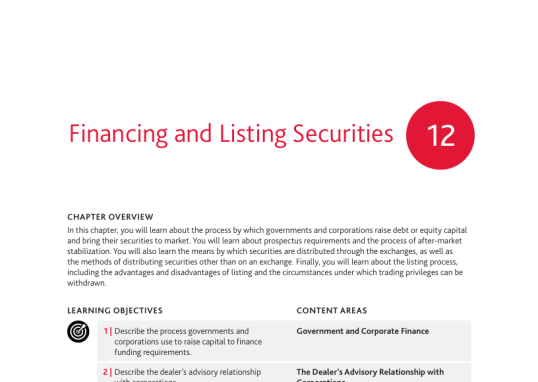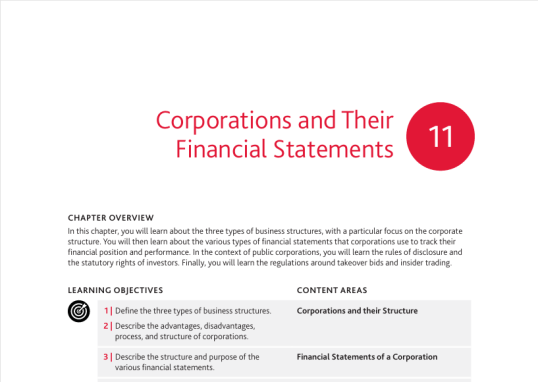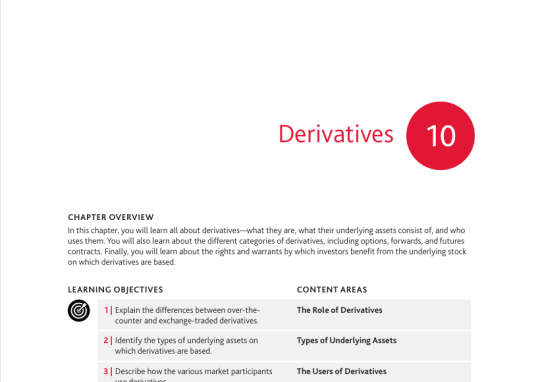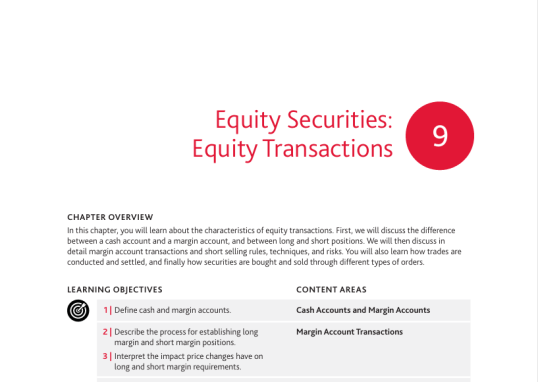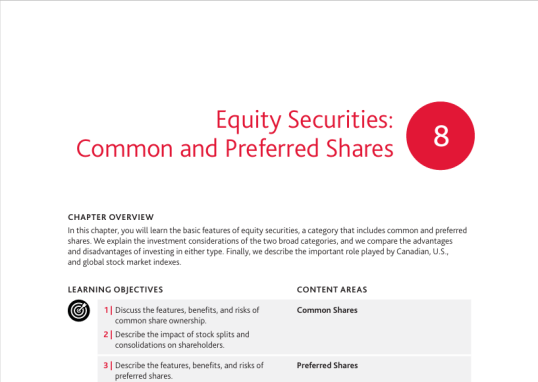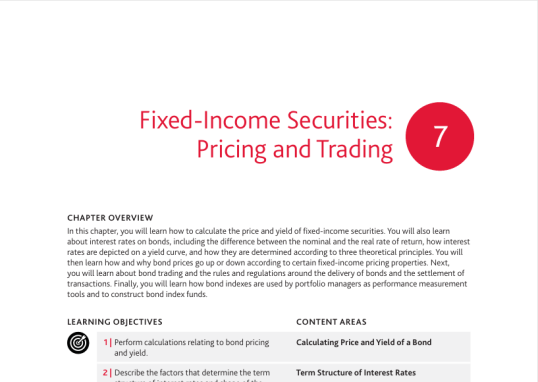CSC V.1 Chapter3 notes
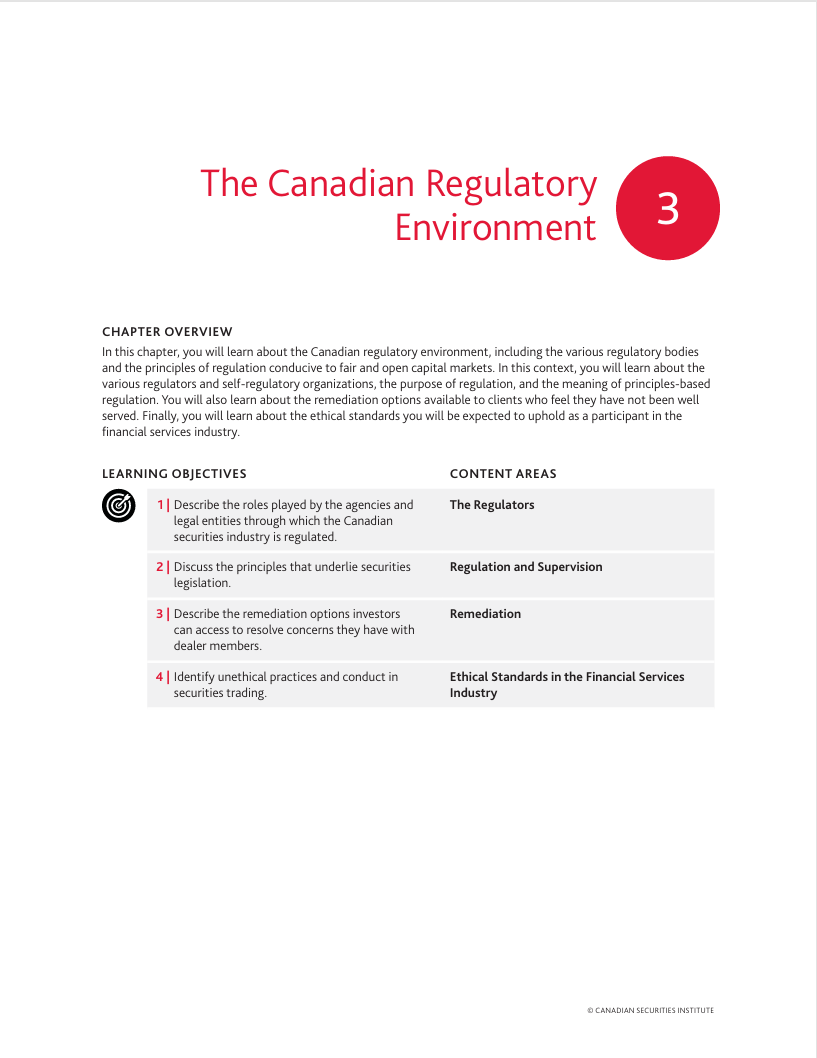
In
THE CANADIAN REGULATORY ENVIRONMENT
THE REGULATORS
- Each province and territory is responsible for creating the legislation and regulation under which a business in the securities industry must operate. Outside of Quebec (where the regulatory body is the Autorite des marches financiers), the financial sector is regulated separately by the Office of the Superintendent of Financial Institutions (OSFI)
- The Canadian Securities Administrators (CSA) is an umbrella organization of Canada’s ten provincial and three
territorial securities regulators. Its mission is to develop a national regulatory system that fosters fair, efficient, and vibrant capital markets in which investors are protected from unfair, improper and fraudulent practices - Self-regulatory organizations (SROs) are private industry organizations to which the provincial regulatory bodies have granted the privilege of regulating their own members. SROs include the Investment Industry Regulatory Organization of Canada (IIROC) and the
Mutual Fund Dealers Association (MFDA). If an SRO rule differs from a provincial rule, the more stringent rule applies
IIROC & MFDA
- IIROC’s mandate is to “set high quality regulatory and investment industry standards, protect investors, and strengthen market integrity while maintaining efficient and competitive capital markets”
- IIROC is involved with financial compliance, business conduct compliance, registration, enforcement and market surveillance
- IIROC’s market surveillance includes real time monitoring of trading activity on stock exchanges, the Natural Gas Exchange, and ATSs. It also ensures that dealer members comply with the timely disclosure of information by publicly traded companies, and carries out trading analysis and compliance with trading rules
MFDA is the mutual fund industry’s SRO responsible for regulating the distribution and sales of mutual funds by its members in Canada. The MFDA does not regulate the funds themselves
THE OFFICE OF THE SUPERINTENDENT OF FINANCIAL INSTITUTIONS (OSFI)
- OSFI is the regulatory body for all federally regulated financial institutions
- It is responsible for regulating and supervising the following institutions:
- Deposit-taking institutions including banks, trust and loan companies, and co-operative credit associations
- Insurance companies, including life and property and casualty
- Foreign bank representative offices licensed or chartered by the federal government
- Federally-regulated pension plans
- OSFI does not regulate the securities industry
INVESTOR PROTECTION FUNDS
- The Canadian Investor Protection Fund (CIPF) protects eligible customers in the event of the insolvency of an IIROC dealer member
- CIPF does not protect against “normal” market losses
- All accounts are covered, either as part of the customer’s general account or as a separate account. Accounts such as cash, margin, short sale, options, futures and foreign currency are combined and treated as one account. Separate accounts, such as registered accounts and trusts, receive separate coverage
- The maximum coverage is $1 million
EXAMPLE: Mr. Huang has $500,000 in a Canadian dollar trading account and $750,000 in an American dollar trading account. As well, he has $450,000 in an RRSP Account. His maximum protection under CIPF would be: $1,450,000. The trading accounts would be “combined” to arrive at a total of $1,000,000 in protection and his RRSP Account would receive up to an additional $1,000,000 in protection.
INVESTOR PROTECTION FUNDS (Con’t)
The Mutual Fund Dealers Association Investor Protection Corporation (MFDA IPC) provides protection for eligible customers of insolvent MFDA member firms. Coverage provided is limited to $1,000,000 per customer account – similar to CIPF- The Canada Deposit Insurance Corporation (CDIC) is a federal Crown Corporation that provides deposit insurance. CDIC insures eligible deposits up to $100,000 per depositor in each member institution
- To be eligible for insurance, deposits must be held with a member institution in Canadian currency and payable in Canada. Term deposits must be repayable no later than five years from the date of deposit
EXAMPLE: Assume that you have $80,000 cash on deposit in your name and $120,000 on deposit in a RRSP. In the institution were to fail, CDIC would insure up to $180,000: $80,000 is fully covered for the cash deposit, and $100,000 of the $120,000 in the RRSP
REGULATION AND SUPERVISION
- Regulators have four primary objectives in imposing regulation:
- Consumer protection
- Fairness – markets must perceive that markets are fair
- Economic stability – efficient flow of capital
- Social objectives
- The Canadian securities industry follows a principles-based regulatory model, rather than a rules-based model. Regulators set objectives for securities dealers and allow the firms themselves to decide how best to meet those objectives
- “Full, true and plain disclosure” of all pertinent facts is the general principle underlying Canadian securities legislation
- Securities acts use three methods to protect investors:
- Registration of securities dealers and advisors
- Disclosure of facts necessary to make reasoned investment decisions
- Enforcement of laws and policies
NATIONAL REGISTRATION DATABASE
- The National Registration Database (NRD) is a web-based system to file registration forms electronically. It is designed to enable a single electronic submission satisfy all jurisdictions in Canada. Both the IA and dealer member are required to notify the applicable SROs in writing of any material changes in the original answers to the questions on the NRD application (such as change of address)
- Gatekeepers in the securities industry include dealers and all of their employees, particularly in front line roles. A gatekeeper must: Collect and record client information to identify potentially suspicious clients; monitor activity in client accounts for possible illegal transactions; and report any transactions or proposed transactions in client accounts that are suspicious
- Money laundering, terrorist financing, financial fraud and illegal trading are of particular concern to gatekeepers
NRD (Con’t)
- Compliance with gatekeeper obligations begins with the Know Your Client (KYC) rule. The SROs require that securities dealers and their IAs take the following steps to meet their KYC obligations:
- Learn the essential facts relative to every client and to
every order or account accepted - Verify that the acceptance of any order for any account
is within the bounds of good business practice - Verify that the recommendations made for any account
are appropriate for the client’s investment objectives,
personal circumstances, and tolerance to risk
- First step in complying with KYC is completion of a New Account Application Form. A partner, director, officer or branch manager must approve the application prior to or promptly after the first transaction
CLIENT RELATIONSHIP MODEL (CRM)
- IIROC introduced new requirements for dealers in 2012, requiring greater disclosure requirements for advisors
- Firms are required to develop and maintain policies to identify, disclose and address existing and potential material conflicts involving clients. Firms must either: Avoid the conflict or disclose the conflict or Otherwise control the conflict of interest situation
- CRM Guidelines require that the suitability of an investment decision be conducted whenever any of these trigger events occur: a trade is accepted; a recommendation is made; securities are transferred or deposited to an account; there is a change of representative or portfolio manager; there is a material change to the KYC information for the account
REMEDIATION
- Arbitration is an option for clients who feel that they havebeen treated unfairly. An independent arbitrator listens to the facts, decides how the dispute should be resolved, and decides what penalty/remedy should be imposed. To be eligible for arbitration: The client must have first tried to have resolved the issue and the claim is $500,000 or less. Decisions are binding on both parties
- Ombudsman for Banking Services and Investments (OBSI) – independent of the financial services industry, its final decision is not binding for either the investor or the financial services provider
ETHICAL STANDARDS IN THE FINANCIAL SERVICES INDUSTRY
- High ethical standards are of paramount importance. The exchanges and the SROs have extensive rules and regulations that govern trading on an exchange and industry practices in general. Infractions may lead to fines, suspensions, expulsion and even criminal charges
- Examples of unethical practices include: Deceiving the public about the price or value of any security; Creating the misleading appearance of active public trading to make a profit; Manipulating or attempting to manipulate the market; Making a fictitious trade that involves no change of beneficial ownership; Using high-pressure or otherwise undesirable selling techniques; Violating any statutes or laws; Misleading a client as to the risk involved in a security; Trading in one’s own account before effecting the same trade (front-running); Conducting oneself in a way that would bring the securities business, the exchange or IIROC into disrepute
- All telemarketers must subscribe to the National Do Not Call List (DNCL) which prohibit telemarketers from calling any number that has been registered for more than 31 days
Author
shanghaizhangyijie@gmail.com
